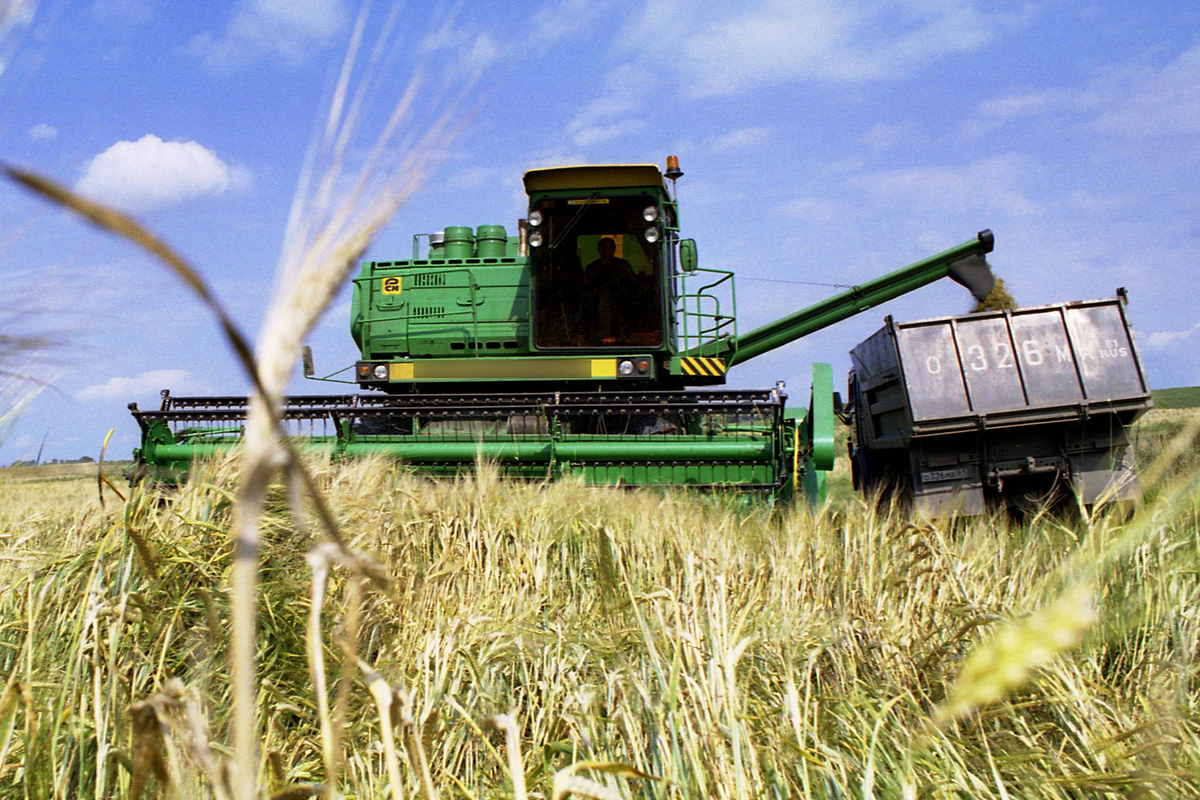Russia is uncovering a new type of weapon: the risks of record exports of sought-after raw materials are named
[ad_1]

Russian farmers have once again set a record for grain. This time we are talking about exports. In the first half of the agricultural year 2023 (from July 1 to December 31), almost 39 million tons of grains and legumes were sold abroad. Which is 19% higher than the previous result achieved three years ago. A separate line includes humanitarian supplies of Russian crops to poor countries in Asia and Africa – free of charge, 25-50 thousand tons each. But the question is: should Russian consumers rejoice at this record?
We exported 27.6 million tons of wheat (almost 4% more than in the 2020-2021 season), barley exports exceeded 27%, grain legumes – 2.6 times… And then without stopping: corn, flour, even durum wheat. Of which we produce little (for pasta and vermicelli) and therefore practically do not export it. But last season they sold 720 thousand tons – 3.5 times more than usual. .
But these achievements also have a downside. In pursuit of currency, Russian exporters, as a rule, recklessly sell everything that is poorly stored or poorly protected by the state. Let us remember the autumn story, when peasants were left without diesel fuel during the harvest season. A liter of diesel fuel cost 100-120 rubles instead of the usual 50. And in some regions it was not available at all…According to some gray schemes (in pursuit of profit), energy resources were transported to Turkey, and then they “spread” throughout the world.
Will it happen that, having become carried away by the export of grain, we ourselves will suddenly find ourselves with empty elevators and storage facilities? According to Igor Abakumov, Candidate of Economic Sciences, host of the “Rural Hour” program, traders buy wheat on exchanges at domestic Russian prices for $100-180 per ton. And the peasants sell it because they have nowhere to go. We need to pay off loans, prepare for the upcoming sowing campaign…And exporters sell wheat at world prices, which at different periods amount to 230-250 dollars. Not a bad profit, for the sake of which, as they say, you can turn your back on the domestic market.
So with durum wheat, before the government banned their export, we managed to set a record. Abakumov says that the government intervened on time: we have enough for pasta, noodles and vermicelli for domestic consumption; we will not buy “outside”.
“Although,” he continues, “this year we have a bad harvest with these varieties.” In the fall, the east of the Orenburg region, where this crop is mainly grown, was flooded with rain, and durum wheat sprouted on the vine. Large volumes are considered off-grade. The Baltic states are ready to buy them, but there is a government ban, since it is, after all, considered durum wheat.
On the other hand, having collected about 143 million tons of grains in 2023 (of which about 95 million tons are wheat), we cannot, like a dog in a manger, leave huge reserves that we simply cannot eat or process for the domestic market.
Our domestic needs are much more modest – about 80 million tons. Which will be enough for us for food, for confectionery, for fattening livestock, and for strategic reserves. And it will even remain “with a tail”
This means that the harvested crop needs to be stored somewhere. The easiest option, although not under conditions of economic sanctions, is export. To the intrigues of the West. we were able to adapt and are setting records. Although we are not the largest grain-producing country in the world. We are the largest exporters, which gives Western politicians a reason to say that Russia is using a “grain weapon.”
How to use this “weapon” more effectively?
This is not the first year that analysts have been calling on peasants to increase their poultry and livestock numbers – then their heads won’t hurt about “unplanned” millions of tons of grain. Of course, for fattening animals. And product prices will creep down. But only after chicken eggs at retail rose in price by 40-50% did we learn that from 2021 to 2023 the number of poultry farms in the country decreased by almost 12%. But grains are the basis of bird food.
The situation with cattle is not the best either. In recent years, the population has been systematically declining. As of June 1 last year, it was 18.3 million, 0.8% less than a year earlier. Overall, it has decreased by 13% since 2013. Of course, I would like it to be exactly the opposite, to grow – after all, this means additional millions of tons of milk and beef. Which, due to the high price, has long become a luxury for Russians.
But cattle are decreasing, officials even found the reason for this phenomenon: due to increased animal productivity…
[ad_2]
Source link






